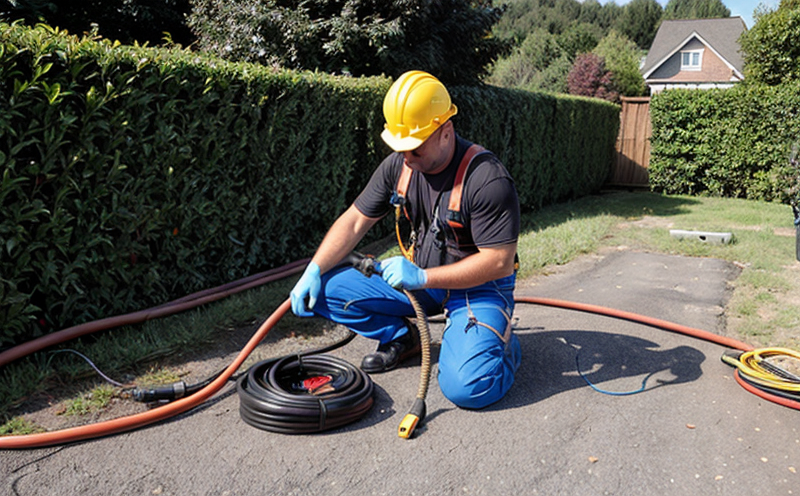Cable termination inspection
Cable termination is a critical aspect of electrical and electronic systems. It involves connecting the end of an insulated conductor to another piece of equipment or system, ensuring reliable operation and minimizing risk of failure. In sectors like power distribution, telecommunications, and automotive engineering, cable terminations can be subject to high stress due to physical strain, environmental factors, and continuous service conditions. This makes regular inspection vital for maintaining safety and performance. Cable termination inspection ensures that all connections are correctly made and securely fastened. The primary goal is to identify any potential issues before they lead to system failure or compromise on safety standards. Inspections can be carried out using various methods including visual checks, electrical tests, and mechanical stress testing depending on the type of cable and its application. For instance, in power systems, high-voltage cables require stringent inspections due to their critical role in electricity transmission. Visual inspections help detect signs of wear or damage such as cracks, fraying, or corrosion at the termination point. Electrical tests assess insulation resistance which helps prevent short circuits and ground faults. Mechanical stress testing ensures that terminations can withstand physical forces without failure. International standards like IEC 60502-1 specify criteria for these inspections ensuring they meet global quality benchmarks. Compliance with such standards is essential to avoid non-compliance penalties and ensure safe operation of electrical systems. Properly conducted cable termination inspections play a crucial role in preventing costly downtime, reducing maintenance costs, enhancing system reliability, and ensuring regulatory compliance.Applied Standards
Cable termination inspection adheres to several international standards designed to ensure the integrity and safety of electrical connections. Among these are IEC (International Electrotechnical Commission) standards such as:- IEC 60502-1: This standard provides guidelines for testing and inspection procedures applicable to flexible cords, flexible cables, and fixed cables used in household appliances. It covers both mechanical tests (such as tensile strength checks) and electrical performance criteria.
- IEC 60857-2: Focuses on the measurement of insulation resistance which is crucial for preventing hazardous contact with live parts within equipment enclosures.
Quality and Reliability Assurance
Ensuring the highest levels of quality and reliability in cable termination inspection is paramount for maintaining safe and efficient electrical systems. Quality assurance (QA) practices include rigorous testing protocols, detailed documentation processes, and ongoing training programs for personnel involved in conducting inspections. QA processes often involve multiple stages:- Pre-inspection: Conduct initial assessments to identify any visible defects or potential risks.
- Testing: Utilize advanced equipment such as megohmmeters for measuring insulation resistance, multimeters for voltage checks, and torque wrenches for verifying secure connections.
- Data Recording: Maintain comprehensive records of all inspections including test results, observations, and corrective actions taken.
Competitive Advantage and Market Impact
In today’s competitive market, maintaining a strong focus on quality and reliability is key for gaining customer trust and securing long-term relationships. For laboratories performing cable termination inspections, this translates into several advantages:- Innovation Leadership: By staying ahead of regulatory changes and incorporating cutting-edge technologies into their inspection methods, laboratories demonstrate leadership in innovation.
- Better Customer Satisfaction: Meeting stringent quality standards ensures that products perform as expected, leading to higher customer satisfaction rates.
- Increased Market Share: Consistently delivering superior service helps attract new customers and retain existing ones, thereby expanding market share.
Frequently Asked Questions
What kind of equipment is used during cable termination inspections?
Various specialized tools are employed depending on the specific requirements. Commonly used equipment includes megohmmeters for measuring insulation resistance, multimeters for voltage checks, torque wrenches to verify secure connections, and high-voltage testers.
How frequently should cable terminations be inspected?
Inspection frequency depends on factors like the criticality of the system being tested, environmental conditions, and operational history. Regular intervals ranging from monthly to annually are recommended.
Can all types of cables be inspected using the same methods?
No; different cable types require tailored inspection approaches based on their intended use and environmental exposure. For example, outdoor power distribution lines will need more robust testing compared to indoor residential wiring.
What role does international standard compliance play in these inspections?
Compliance with standards like IEC 60502-1 and EN ensures that inspections meet global quality benchmarks. This is crucial for avoiding non-compliance penalties and ensuring safe operation of electrical systems.
How does proper inspection contribute to reducing maintenance costs?
By identifying issues early, inspections prevent minor problems from escalating into major failures. This proactive approach reduces the need for expensive emergency repairs and extends the lifespan of equipment.
What skills are required to perform effective cable termination inspections?
Inspection personnel must possess technical knowledge about electrical systems, familiarity with applicable standards, proficiency in using inspection tools accurately, and ability to document findings comprehensively.
Are there any specific challenges associated with inspecting underground cable terminations?
Yes; accessing these locations can be challenging due to limited space access and potential interference from surrounding structures. Advanced imaging technologies and specialized equipment are often necessary to conduct thorough inspections.





